SIM Card Adapters Reviewed
by Joshua Ho on May 24, 2014 5:12 AM EST- Posted in
- Smartphones
- Mobile
- Laptops
- Tablets
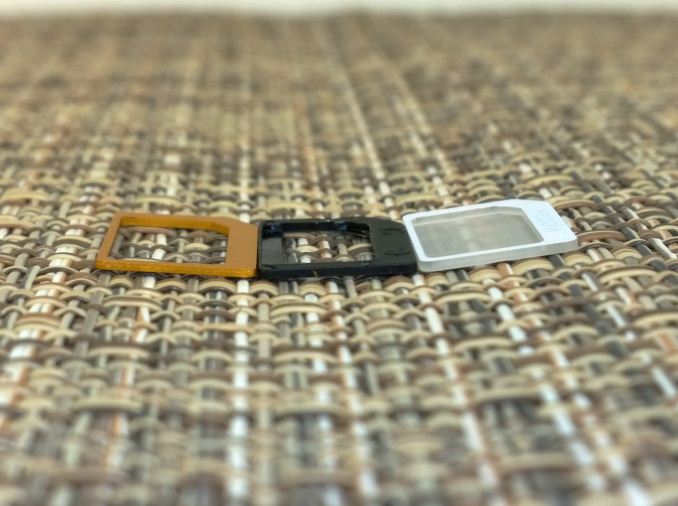
A few weeks ago, I was genuinely questioning what SIM adapter I should buy. After all, while a SIM adapter is generally cheap and also a relatively simple product, the consequences for poor design can be catastrophic. As a product of today’s need to ensure that phones and other mobile devices are made as small as possible, it’s often the case that the SIM slot is soldered to the logic board, which is often one of the most expensive parts of the device. This mean that ruining the SIM slot by using the wrong five dollar adapter can easily cause over a hundred dollars in damage.
So I decided to buy every distinct type of SIM adapter on the market. To my understanding, there are only three main types, all of which are simply variations upon each other. The first is the simple cutout. This is effectively just a piece that would be the same size and shape as the “waste” plastic that is produced when stamping out a larger SIM to a smaller one. This is a very simple design, and requires a piece of scotch tape on the plastic side of the SIM in order to make the SIM and adapter into a single piece that goes into the phone.
The second type of adapter takes the cutout format and adds small notches in the corners to hold the SIM inside without glue. This is one of the most expensive adapters I’ve seen on Amazon.
The final type of adapter is another variation upon the cutout, simply adding a plastic backing to the area that is open on both sides in a cutout. This allows the SIM to be placed inside the adapter without falling out in some orientations, but requires double-sided tape to hold the SIM in place without issue.
So which of the three is best? It’s tough to say, as all have their idiosyncrasies. The second type of adapter is simply impossible to recommend though, it ends up visibly thicker than a standard SIM. This can easily be a problem, as the pins that make contact with the SIM are fragile, and any significant deviation from a standardized thickness can cause the SIM slot to no longer accept non-adapted SIMs. The third type requires double-sided tape to not risk the SIM falling out in some strange manner, and has to be thicker than the SIM that it is adapting as a function of its design, although it can be made much thinner than the second type. The simple cutout is ultimately thicker than the SIM itself, but only by the thickness of the tape used. Personal experience with phones has shown that a single layer of scotch tape is often the difference between frequent SIM disconnect errors and no problems at all, so I suspect that it’s within tolerances as well.
Ultimately, the simple cut-out is likely to be the best choice, and it’s the one that I’m willing to risk my phone with. However, it’s absolutely critical to make sure that strong scotch tape is used to make the adapter/SIM combination, and to never try inserting the adapter by itself. Ultimately, while the other solutions are more novel, with all of their disadvantages it’s tough to recommend them, although the third type of adapter can be used in a pinch. For future reference, I've placed a table of all the adapters I've bought below to provide more examples.
| Cutout Adapters | Cutout w/ Notched Attachment | Cutout w/ Backing |
| KAISI 4 in 1 SIM Adapters | Sadapter NanoSIM to MicroSIM | Smatree NanoSIM Adapter |
| Fosmon Nano to Micro/Standard SIM | ||
| Noosy SIM Adapters |


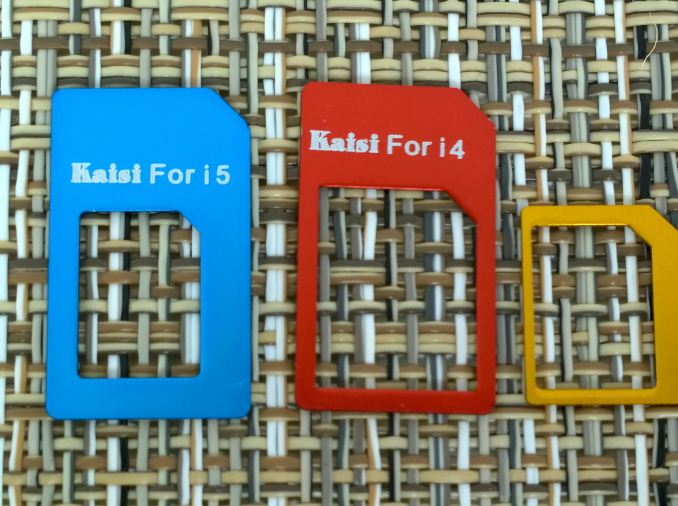
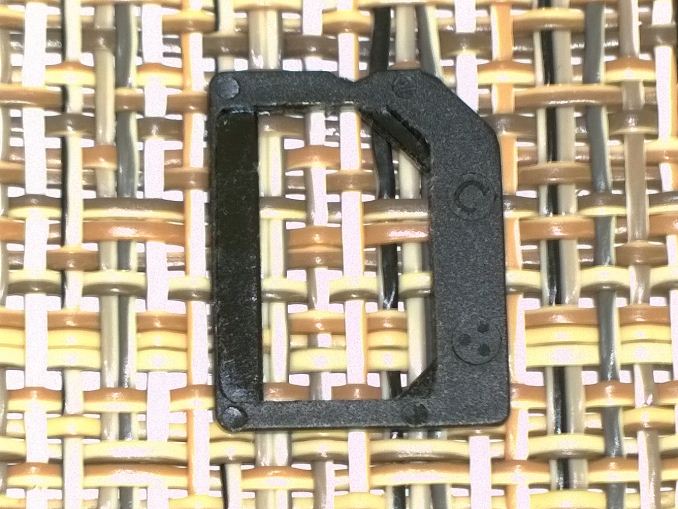
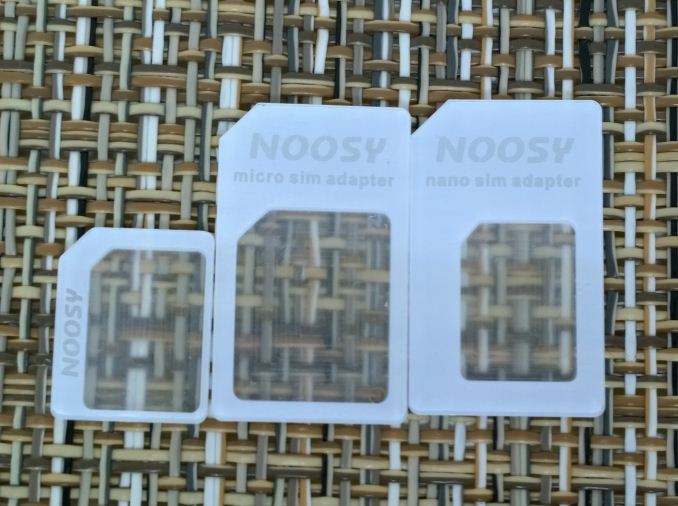
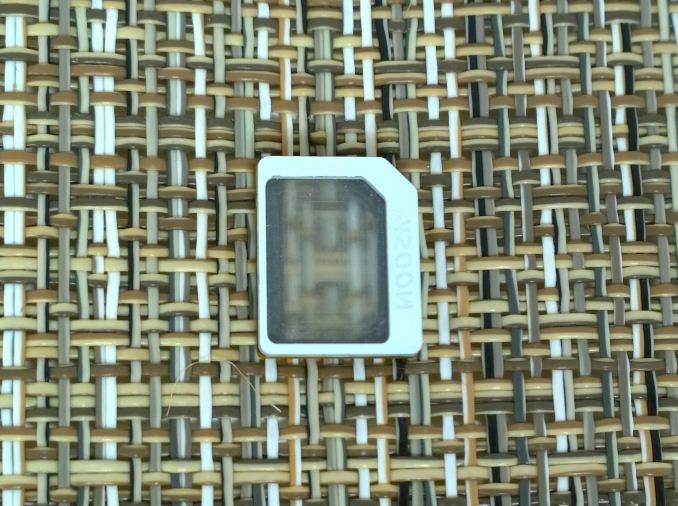








24 Comments
View All Comments
pliablemoosethebanned - Sunday, May 25, 2014 - link
I've been trimming sim cards for years now, it's simple stuff, and you can make your own adapters if you get a sim card trimmer that does multiple sizes, and have some old sim cards to use...LOL, looking at 4 sim cards sitting on my monitor base now, 1 trimmed from full size to micro, and 3 trimmed down to nano size.
fokka - Sunday, May 25, 2014 - link
i once cut down my sim to fit it into an old iphone 4 my father bought from some guy. it worked quite well and for a time i used the cut down card in my htc sensation again without any kind of adapter. i just had to carefully position it and the tension of the pins held it in place. i'm using an adapter now, just for the peace of mind, but i didn't know this can be such a delicate matter for other people/phones.joshschwartz - Tuesday, May 27, 2014 - link
I travel a lot, so I've done my research on pre-paid SIM Card companies, and without a doubt, http://www.g3telecom.com offers the best deals overall on international calling. You can save up to 90% on roaming (compared with your home carrier) with a single SIM-Card that has global coverage.The set-up is a simple pay-as-you-go plan without bundling or contracts, which is exactly what I was looking for, since I didn’t know exactly how many hours I would use and did not want to pay more than necessary. I would definitely recommend www.g3telecom.com if you want the best deals for international calls.
gorcorps - Monday, June 16, 2014 - link
AT&T didn't charge me when I asked for a different SIM size after buying a used phone. Why bother with all this cutting and adapter BS if you can get the correct size for free?